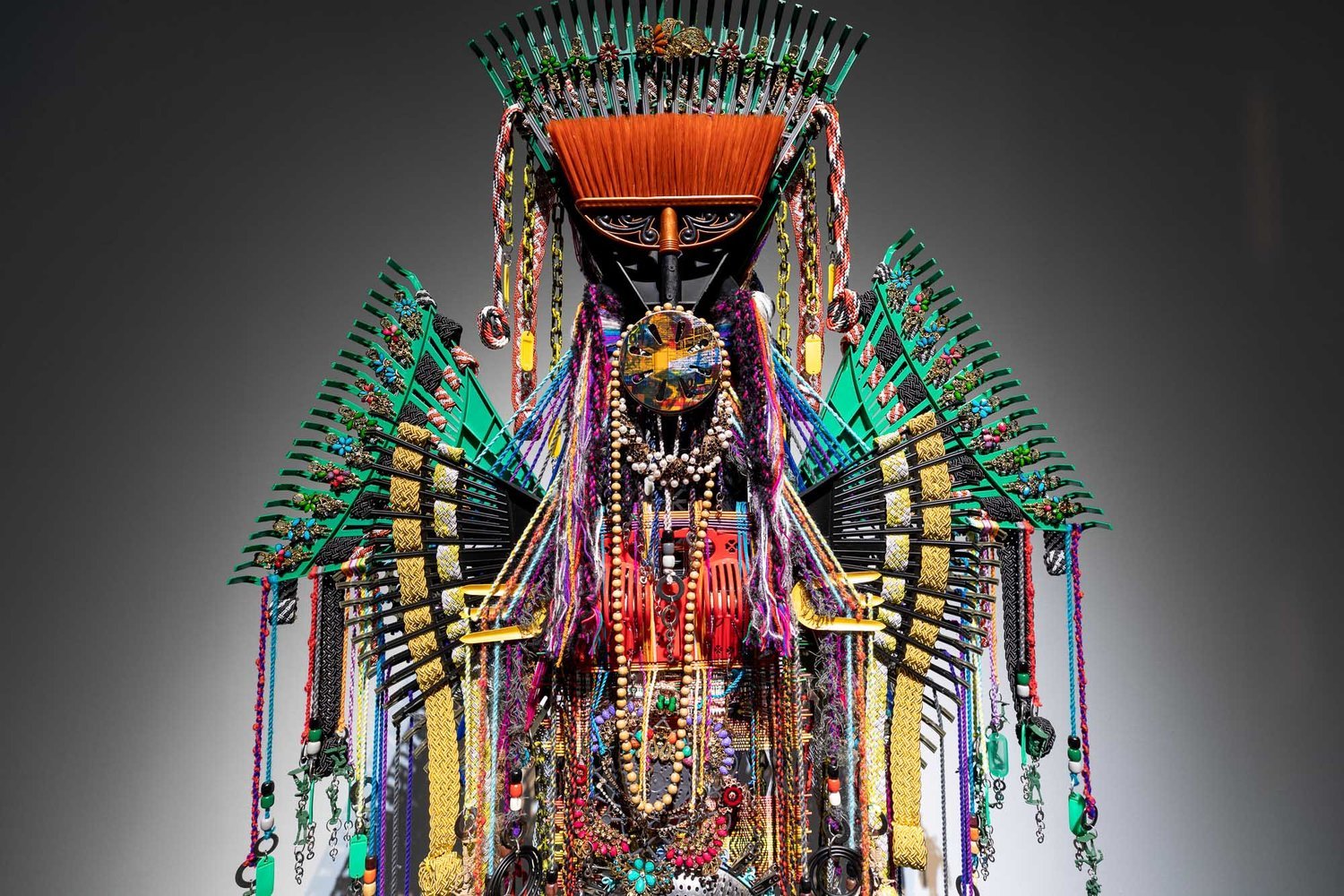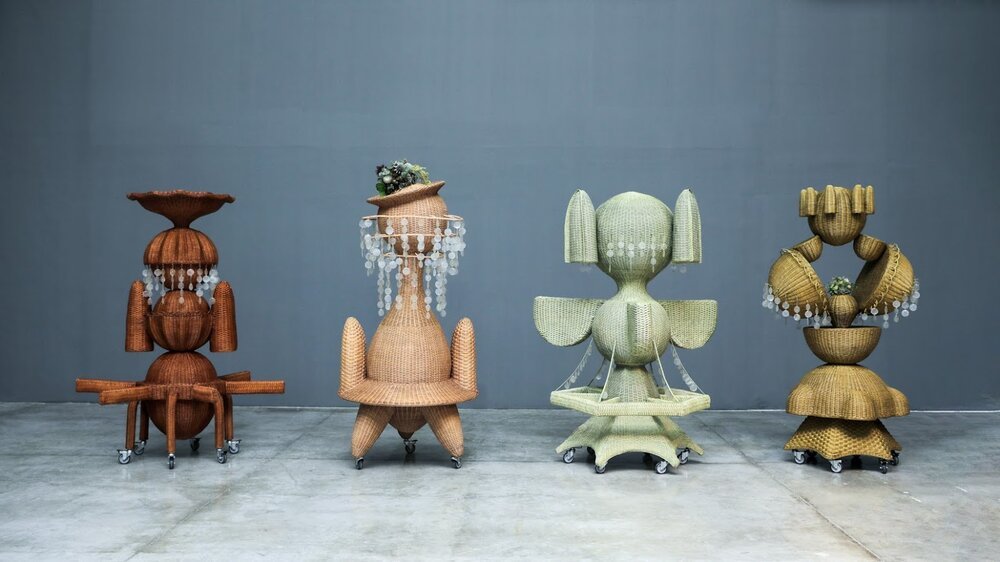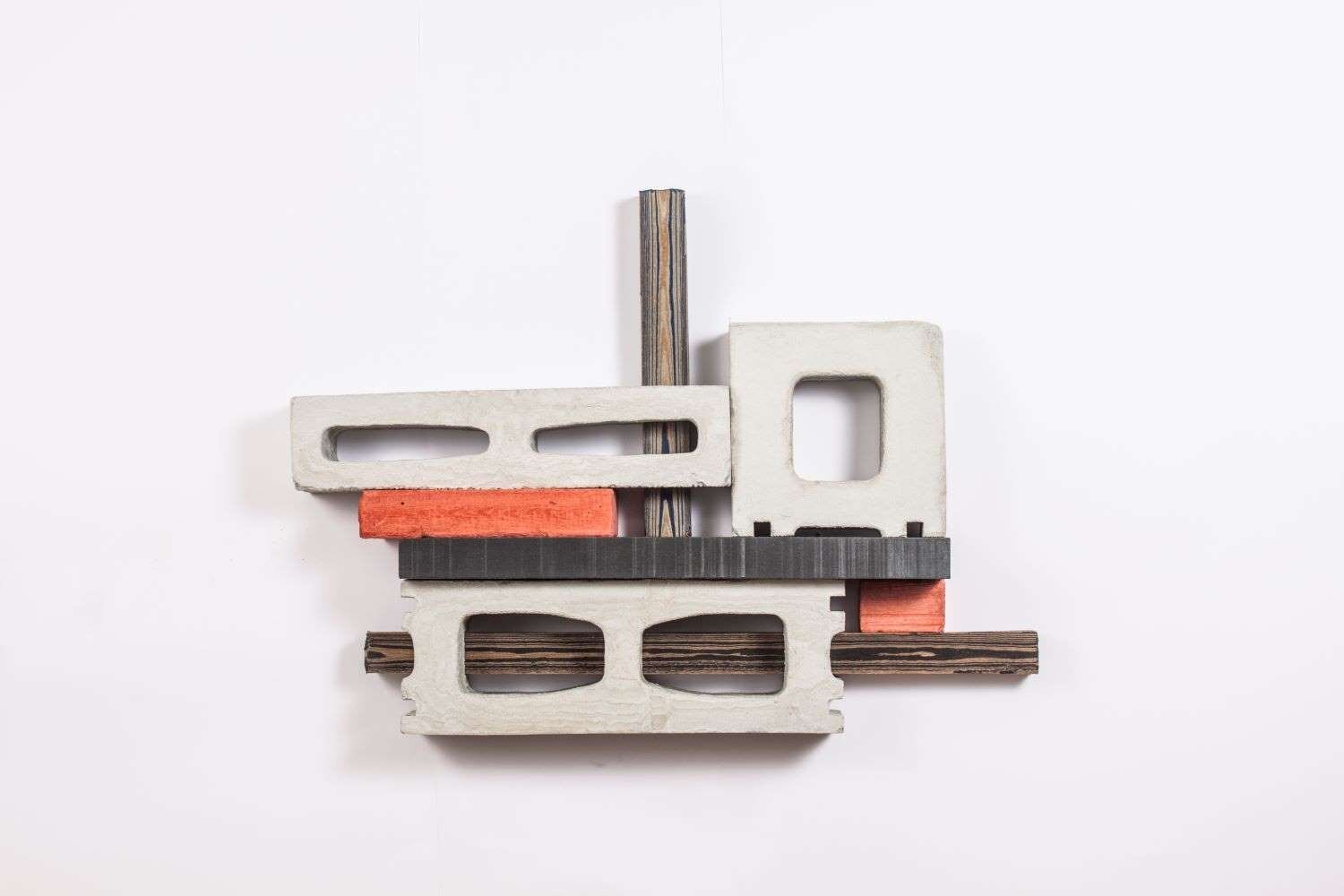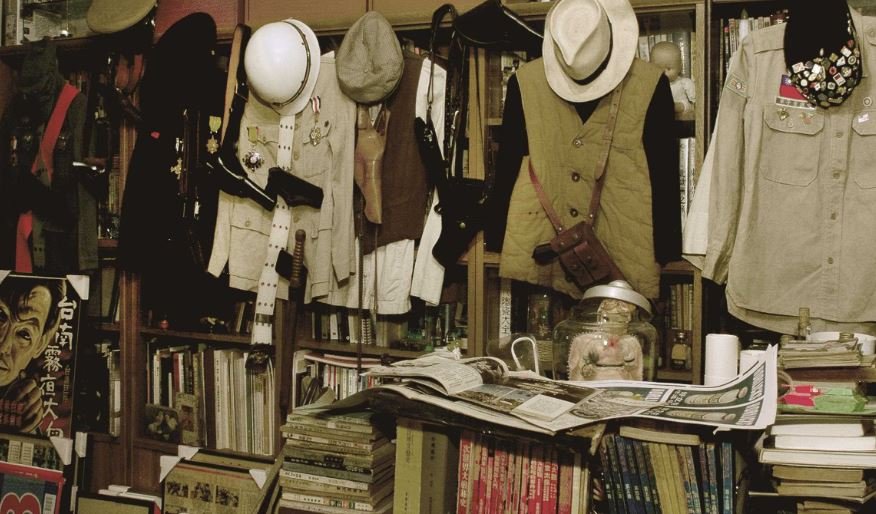'Stories We Tell To Scare Ourselves With' at MOCA Taipei
An expanded notion of regionalism
By Ian Tee
Anne Samat, 'Puteri 7 (Berselendang Koning / Seventh Princess with yellow scarf)', 2018, rattan sticks, yarns, washers, rakes, PVC chains, home, fashion accessories, kitchen and garden utensils, stationary items, 224 x 122 x 30cm. Image courtesy of MOCA Taipei.
‘Stories We Tell To Scare Ourselves With’ is a group exhibition at MOCA Taipei which takes the figure of the ghost as analogies for our fear of various Others, connecting pre-colonial history with the stories we hear in the present. The show's Chinese title '烏鬼' (literally translated to mean dark ghosts) is a term used to describe the arrival of Southeast Asian slave labour brought to Taiwan by the Dutch colonists. These ghosts often demarcate the distinctions between human and non-human, insiders and intruders, and are differences that feed into stories around nation, people and state.
Curated by Jason Wee and Anita Hsiang-Ning Huang, the exhibition brings together artists and filmmakers connected to Taiwan, Hong Kong and Southeast Asia. It features established names from the region such as Norberto Roldan, Jakkai Siributr, Anne Samat as well as diasporic artists. "I wanted to work within an expansive notion of regionalism when it comes to Southeast Asia in ways that can also account for some crucial migrations," says Wee.
Abdul Abdullah, 'Mutual Assurances', 2017, archival print, 100 x 232cm. Image courtesy of the artist and Yavuz Gallery.
Abdul Abdullah is an Australian Muslim of Malaysian descent whose work deals with the experiences of "other" in society. His 'Wedding' series are wedding portraits taken against lavishly decorated backdrops, and feature newlyweds with faces masked by balaclavas. Contrasting this joyous occasion with the suggestion of criminality, Abdullah expresses the complex feelings and irony in associating "Muslim" with "violence".
Cassie Machado, 'Fig.5 90° 18' 43.057" N 80° 47' 11.726" E', 2014, c- print, 30 x 23cm, 14 pieces. Image courtesy of the artist.
The trauma and memory of the Sri Lankan Civil War is central to Cassie Machado's 'Afterlife' photographs. An artist of English and Sri Lankan descent whose family fled to the United Kingdom in 1983, Machado's work reflects on a major conflict in Mullivaikkal, an island where the Sri Lankan government carried out a genocide against Tamil people in the final stages of the civil war. In this series, she captures the clothes, baggage and human bones which form the landscape, as well as abandoned photo albums. By acknowledging the disappeared lives, Machado offers a gesture of closure and remembrance.
Siki Sufin, 'Masalauway', 2019, wood, objects, dimensions variable. Image courtesy of MOCA Taipei.
The exhibition also seeks to highlight ways in which islandic Taiwan shares colonial, maritime and genetic histories with the rest of archipelagic Southeast Asia. Siki Sufin's work addresses the forgotten history of Taiwanese indigenous soldiers, known as the Takasago Volunteers, sent to the most violent battlefield of the Pacific War in New Guinea during the Japanese colonial period. Tracing their journey to New Guinea and working with a local artist Papa David, these soldiers are evoked in the figure with spreading wings which symbolically brings home the souls of those who died in foreign countries.
'Stories' puts the focus on perspectives which define "We" versus "Them". Just as the ghosts of the past continue to inhabit our present, its shadows reach far into the scripts and habits of our everyday. "The idea of Taiwan is a process of rewriting, restlessly, by circumstance or by rebellion, revising its story of country, land and nation," Wee adds. "I think in a region that has witnessed a recent rise of authoritarian nationalisms, it'll be timely for the Taiwanese audience to ask what kind of nationalism they want, if any, as well as how they might see themselves enjoined to an archipelago rather than a mainland."
'Stories We Tell To Scare Ourselves With' is on view at MOCA Taipei from 26 January 2019 to 14 April 2019.

















